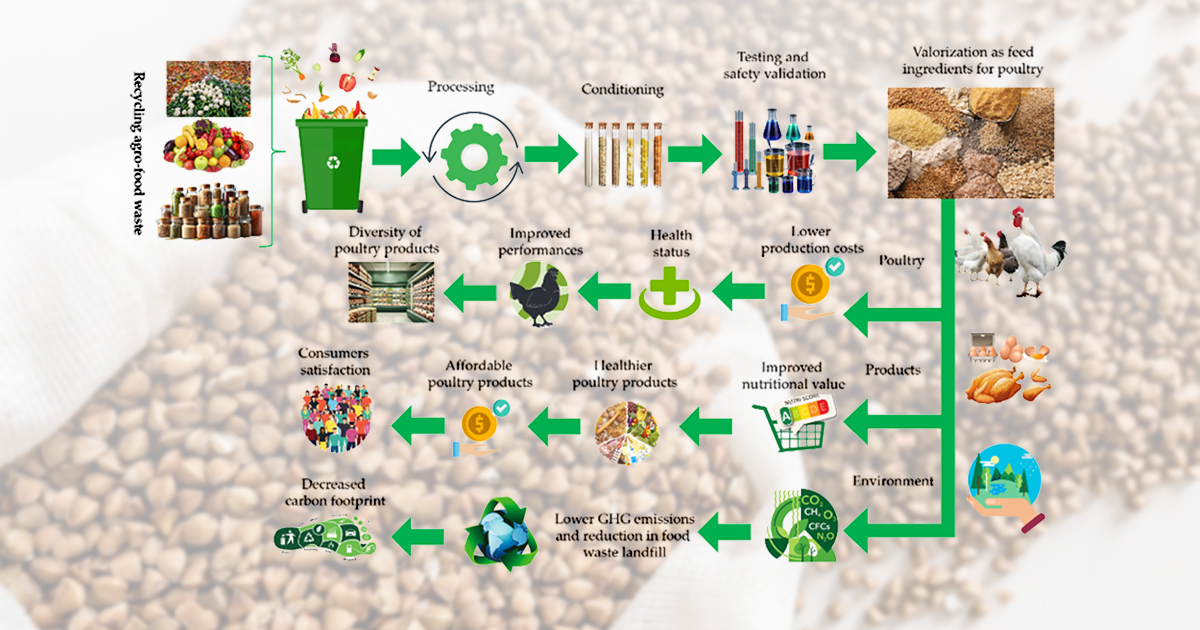Alternative and Novel Feeds for Poultry: Nutritive Value, Product Quality and Environmental Aspects
A special issue of Agriculture (ISSN 2077-0472). This special issue belongs to the section "Farm Animal Production".
Deadline for manuscript submissions: 25 December 2025 | Viewed by 8447

Special Issue Editors
Interests: poultry nutrition; feed additives; by-products; nutritional quality; lipid quality of animal products; antioxidant status; food quality; functional foods
Special Issues, Collections and Topics in MDPI journals
Interests: monogastric nutrition; feed biotechnology; probiotic products; microencapsulation; intestinal health and microflora; fermentation; enzymatic processes
Interests: feed and food quality; by-product valorization; bio-active compounds; hydro- and lipo-soluble antioxidants; lipid degradation; functional food
Special Issues, Collections and Topics in MDPI journals
Special Issue Information
Dear Colleagues,
The search for alternative and novel feeds for poultry addresses the urgent need to enhance nutritive value and improve product quality and/or environmental aspects, aligning with the Sustainable Development Goals (SDGs) by promoting sustainable food systems, responsible resource use, and climate action.
Alternative and novel feeds such as agro-industrial by-products, co-products, plants, insect meal, algae, and fermented and enzymatically treated ingredients, among other novel sources, offer promising avenues to enhance the sustainability of the poultry industry. These alternative feed ingredients can improve nutrient efficiency, reduce the reliance on conventional ingredients, and minimize environmental challenges. Simultaneously, they have the potential to enhance the quality of animal-derived products, such as meat and eggs, by influencing factors like fatty acid profiles, protein composition, bioactive compounds, antioxidant profile, shelf-life, and overall sensory appeal.
This Special Issue aims to bring together contributions from multidisciplinary perspectives focusing on the nutritive value of such feeds, their impact on animal health and welfare, their effects on product quality, and their role in mitigating environmental concerns.
All types of papers related to the topic will be considered.
Dr. Petru Alexandru Vlaicu
Dr. Mihaela Dumitru
Dr. Alexandra Gabriela Oancea
Guest Editors
Manuscript Submission Information
Manuscripts should be submitted online at www.mdpi.com by registering and logging in to this website. Once you are registered, click here to go to the submission form. Manuscripts can be submitted until the deadline. All submissions that pass pre-check are peer-reviewed. Accepted papers will be published continuously in the journal (as soon as accepted) and will be listed together on the special issue website. Research articles, review articles as well as short communications are invited. For planned papers, a title and short abstract (about 250 words) can be sent to the Editorial Office for assessment.
Submitted manuscripts should not have been published previously, nor be under consideration for publication elsewhere (except conference proceedings papers). All manuscripts are thoroughly refereed through a single-blind peer-review process. A guide for authors and other relevant information for submission of manuscripts is available on the Instructions for Authors page. Agriculture is an international peer-reviewed open access semimonthly journal published by MDPI.
Please visit the Instructions for Authors page before submitting a manuscript. The Article Processing Charge (APC) for publication in this open access journal is 2600 CHF (Swiss Francs). Submitted papers should be well formatted and use good English. Authors may use MDPI's English editing service prior to publication or during author revisions.
Keywords
- poultry nutrition
- feed formulation
- nutritive value
- animal performance
- animal health
- product quality
- zero hunger
- food quality
- environmental impact
- circular economy
- sustainability
Benefits of Publishing in a Special Issue
- Ease of navigation: Grouping papers by topic helps scholars navigate broad scope journals more efficiently.
- Greater discoverability: Special Issues support the reach and impact of scientific research. Articles in Special Issues are more discoverable and cited more frequently.
- Expansion of research network: Special Issues facilitate connections among authors, fostering scientific collaborations.
- External promotion: Articles in Special Issues are often promoted through the journal's social media, increasing their visibility.
- Reprint: MDPI Books provides the opportunity to republish successful Special Issues in book format, both online and in print.
Further information on MDPI's Special Issue policies can be found here.







